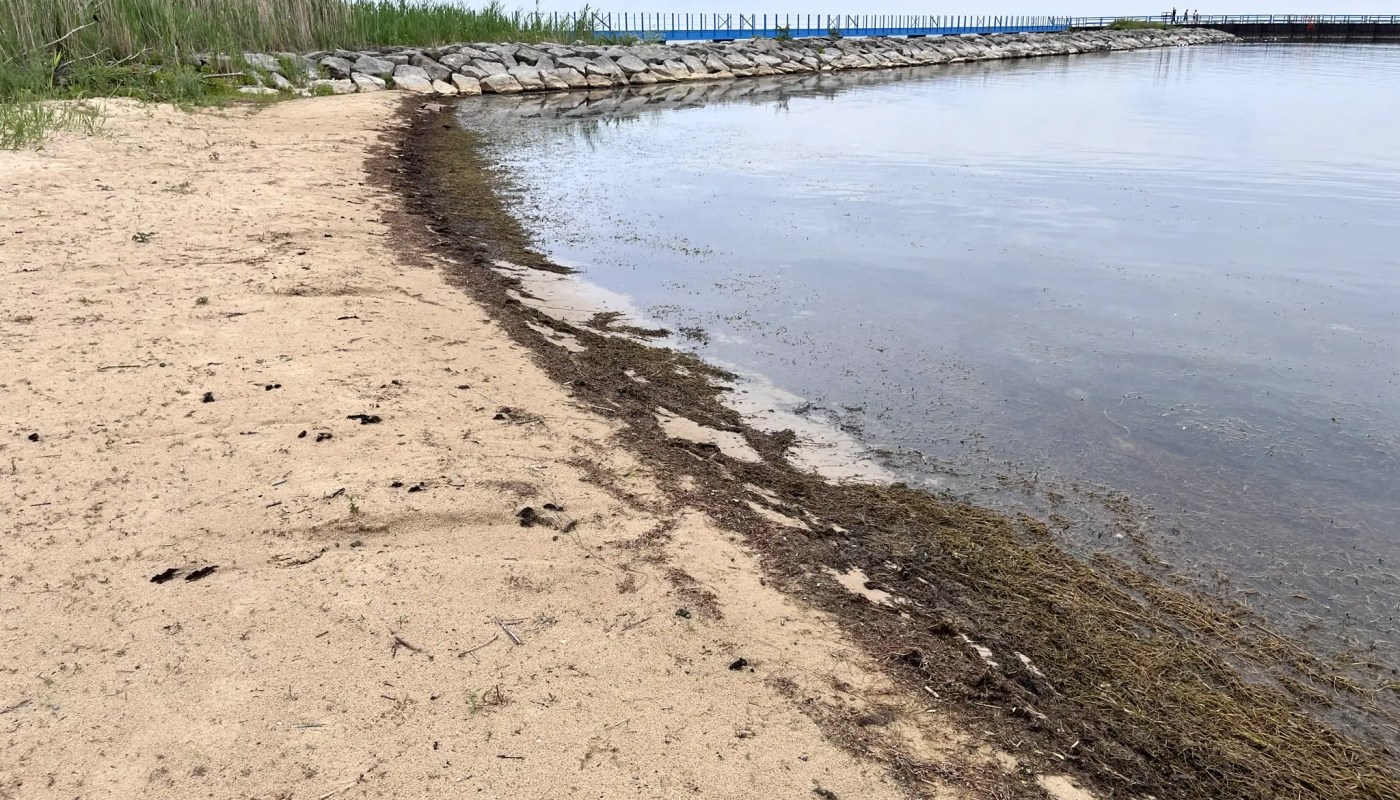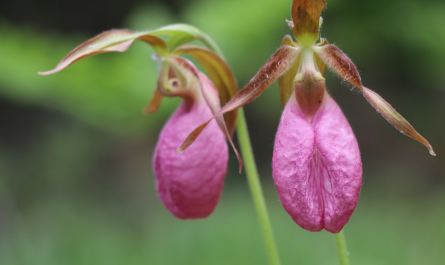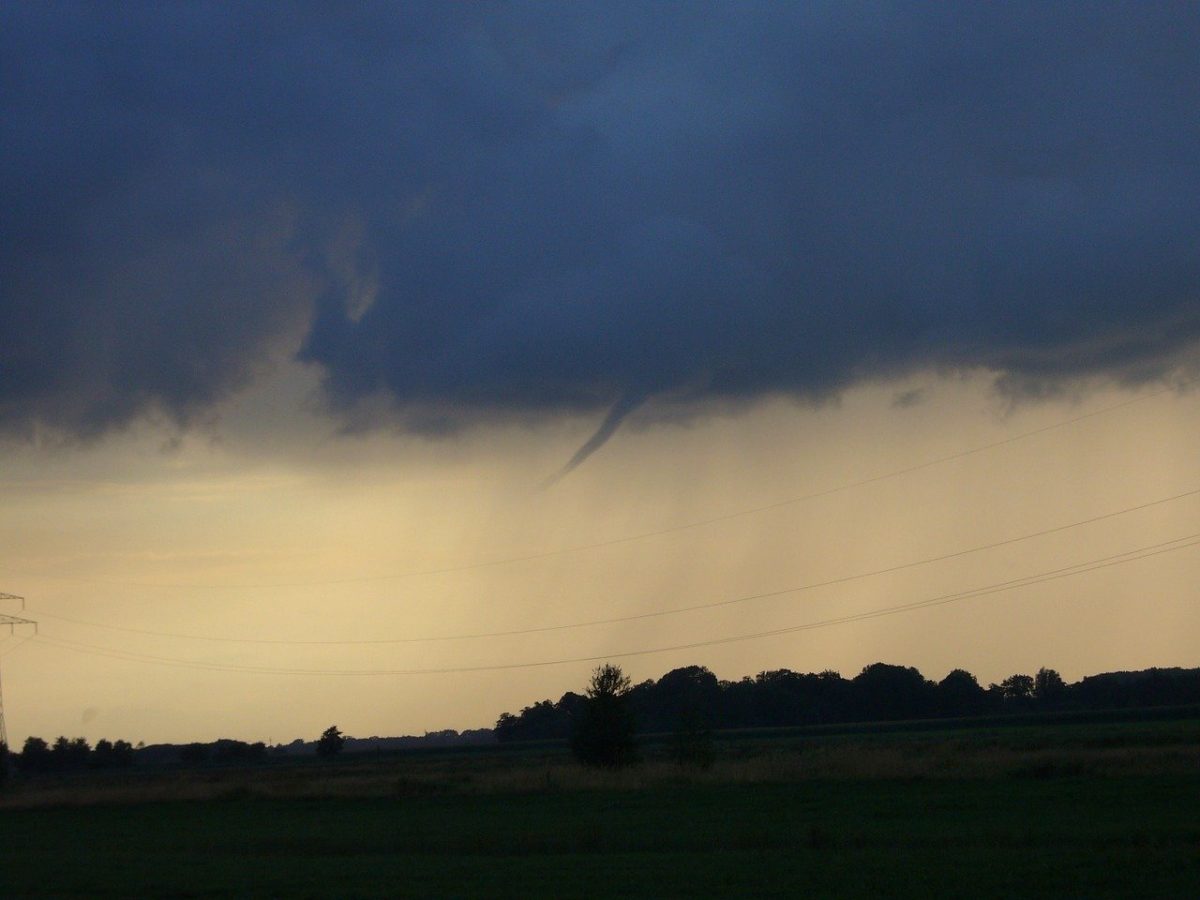We received our first reports of significant algae mats, aka “Saginaw Bay muck” making its seasonal appearance this week. The rotting algae were spotted at the State Docks near Veterans Park in Port Austin on the north eastern edge of Saginaw Bay. Northeast winds pushed the algae mats to shore over the past several days.
As you can see from the video, the muck looks like chocolate pudding. Kids were playing in the water a few feet away.
What is the Muck?
According to Dan O’Keefe at the Michigan State University Extension, this stinky nuisance is caused as a byproduct of the invasive zebra and quagga mussels. The mussels consume phytoplankton from the lake, effectively filtering out the bay. This results in pristine water clarity, which allows sunlight to reach the bottom of the lake. The green algae Spirogyra and Cladophora grow exponentially with this sunlight. The green algae then die off and rise to the surface, creating Saginaw Bay muck mats which accumulate onshore.
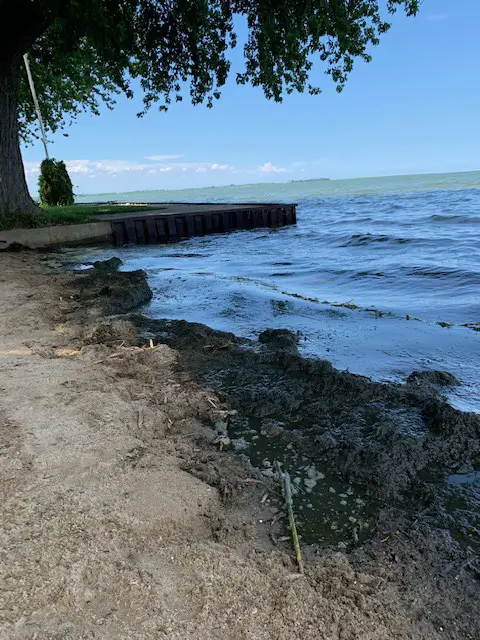
The muck smell has been compared to manure, which is not far off. In our post, Great Lakes Pollution – Saginaw Bay Muck Is Poop; we found that the muck is the carrier host for pathogens like E.coli and Salmonella.
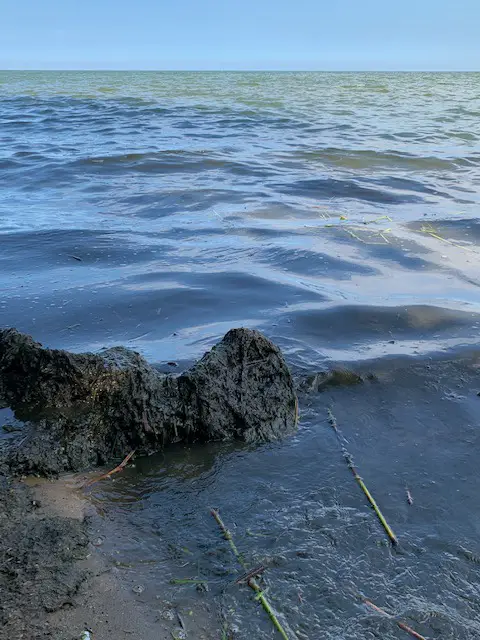
In 2012, a Michigan State University Department of Fisheries and Wildlife research assistant, Marc Werhougstraete said “Muck means sewage and fecal matter are likely evident.” This is caused by old and failing septic tanks, overflow wastewater from Saginaw and Bay City, and runoff from rain-soaked fields sprayed with manure waste from Concentrated Animal Feeding Operations, (CAFOs).
Huron County Beaches Are Open
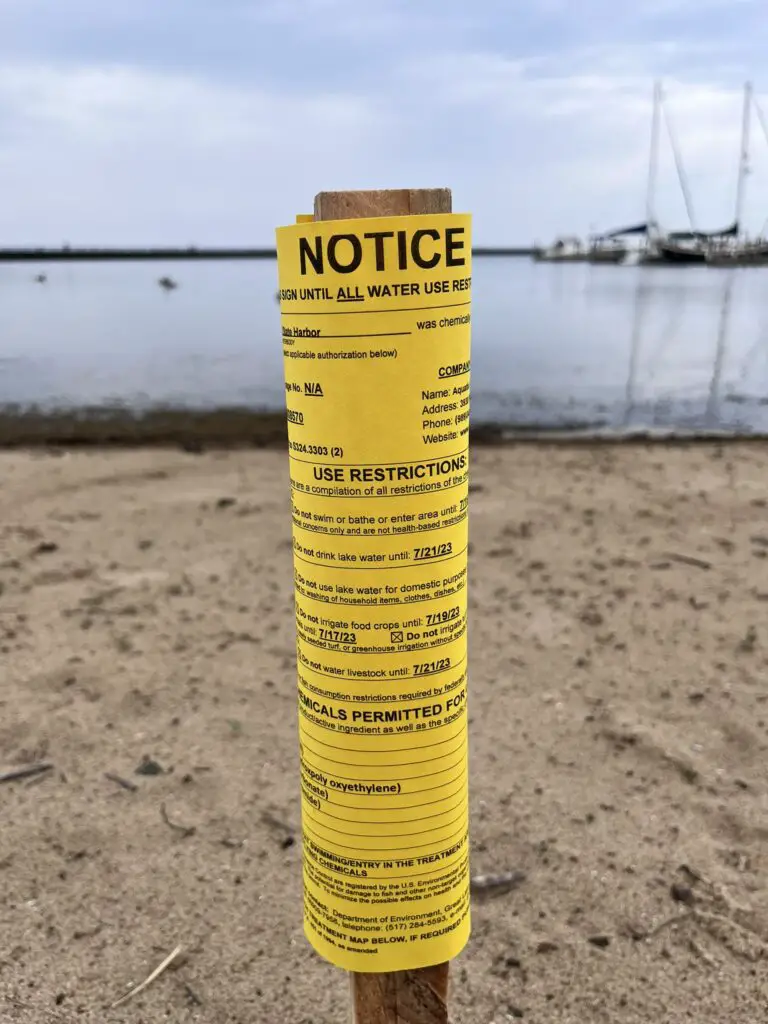
On the east side of Saginaw Bay, the water quality remains high. The Huron County Health Department tests water quality from all its county beaches, looking for E.coli concentrations. Over the past six weeks only one closure occurred. Bird Creek County Park Beach, was shut down briefly in June for high E. coli levels. So far, in July, all beaches tested OK and remain open.
Cautions On Cleaning Muck From Your Beach
If you see the matted Great Lakes muck on the beach, think “poop.” Here is some advice on dealing with it.
- Don’t go into the water, and don’t let your kids play in the wet sand.
- Please avoid contact with muck, wash hands when in contact with it.
- Do not submerge your head in the water.
- Be careful when cleaning the muck. Raking also can release the pathogens from the muck—clean in when no one is around. A sunny day can kill bacteria.
Related Saginaw Bay Muck Reading
Great Lakes Restoration Initiative EPA Advisory Board
Algae Bloom in Michigan’s Saginaw Bay Seen from Space
2020 Great Lakes Water Levels – July
The Big Views of Fish Point Wildlife Area

